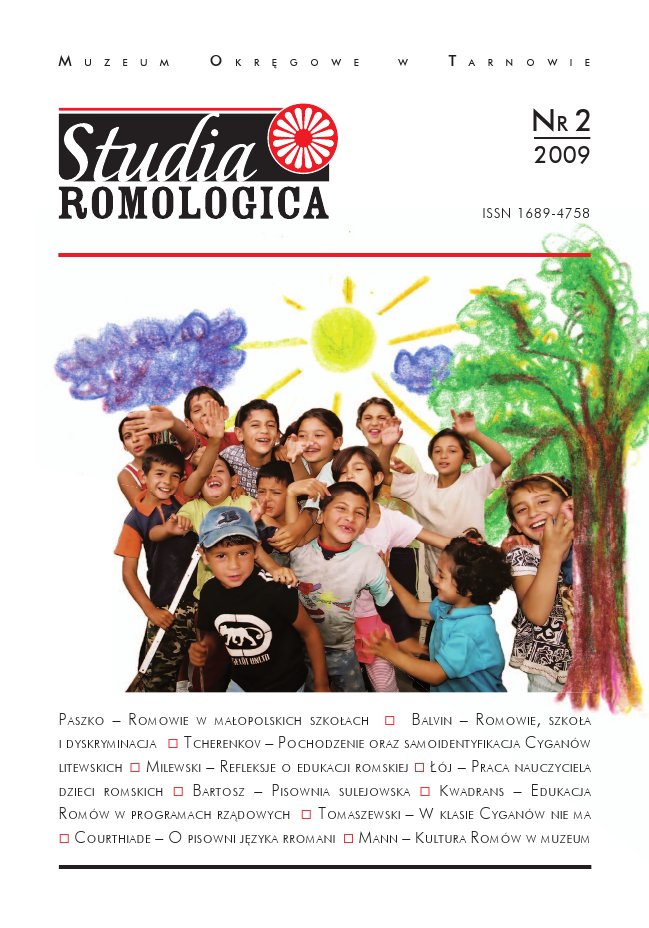Alfabet odpowiedni dla języka cygańskiego, oparty na naukowych podstawach – o pisowni języka rromani
An alphabet suitable for Rromani, built up on scientific grounds – about the spelling of Rromani
Author(s): Marcel CourthiadeSubject(s): History, Social Sciences, Language and Literature Studies, Education, Sociology, Ethnic Minorities Studies
Published by: Muzeum Okręgowe w Tarnowie
Keywords: Roma; Roma language; warsaw spelling; Marcel Courthiade; romani; rromani
Summary/Abstract: A still strikingly relevant quotation by the Poznan philologist Kalina, dated 1880, opens the article and another one, by UNESCO vice-director general Colin, dated 1989, emphasizes the significance of Rromani as a language of culture. The two great principles defined in London (1971) are then introduced: 1. no dialectal preference & 2. the need of a common language. They gave birth to the refusal of selecting a concrete dialect as common language; all have to be collected within a polylectal common language. The article exemplifies such a mechanism on the basis of Polish material (mazurzenie) and how it de facto exists in Spanish. It tells also how separately arose the polylectal approach in Russia and Yugoslavia. One has to understand that brains integrate a kind of filter transforming hearing into understanding –a device very much needed when listening to people with defective pronunciation or foreign accent.The second important question was to define how many Rromani languages are at stake in Europe? Dialectological and dialectometrical data pointed out at the existence of only one Rromani language, heritage of some 90% of the Rroms, beside collateral forms which arose from the melting of Rromani with other local languages (paggerdilects and peripheral idioms).The third task was to elaborate a really linguistic classification of the Rromani varieties and the article describes shortly the dialectal structure of Rromani: two superdialects (O and E) and four dialects (O♮, O#, E♮ and O# – ♮=without mutation, #=with mutation) – beside paggerdilects and peripheral idioms.The fourth step was to elaborate a typology of differences between the various varieties and to highlight the relationship of these differences with the question of understanding. This leads us to the three stages of standardisation: 1. Codification (graphisation, literalisation), 2. Normalisation & 3. Stylisation-popularisation. The article, which treats only codification, brings out the Warsaw decision on a Common alphabet in 21 paragraphs, with detailed comments paragraph by paragraph. To be short, the Rrom from Poland has to learn no more than seven spelling rules in order to acquire the common Rromani writing system. The basis is: everyone is supposed to make a little effort and everything will be much easier for all. New technologies haven’t been forgotten and the article explains how to use Rromani typefaces in IT. In this context, when every year more than 25,000 Rromani pupils are taught in this alphabet in Rumania and many others a the European level, the Rrom from Poland faces the following choice: a vision of his mother-tongue as a cultural with folkloric curio (then he can use the Polish alphabet for it) or a vision in which Rromani is a lively and vigorous source of creation, known all over Europe and beyond: then he has no other choice than to leave aside petty ambitions and learn the seven rules of the European, or Warsaw, spelling system.
Journal: Studia Romologica
- Issue Year: 2/2009
- Issue No: 1
- Page Range: 105-152
- Page Count: 48
- Language: English, Polish, Romany

